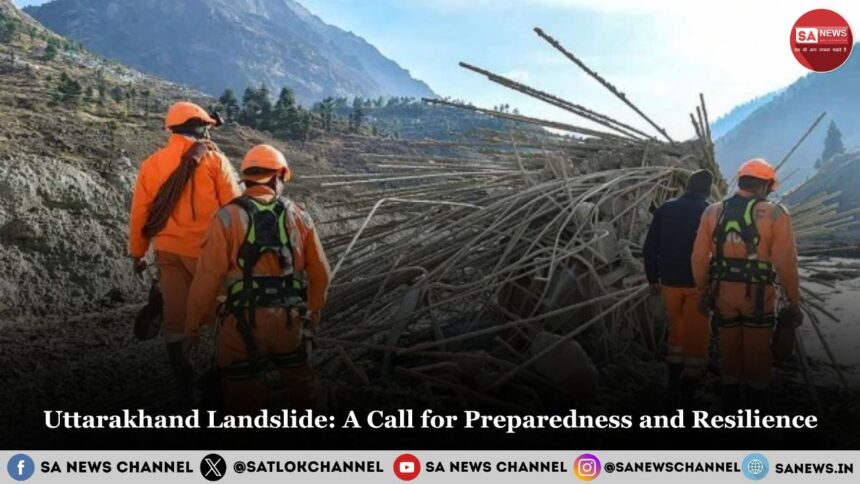Uttarakhand, known for its breathtaking landscapes and spiritual significance, recently faced a tragic landslide near Najang on the Tawaghat-Lipulekh National Highway. This disaster, which claimed one life and injured six others, serves as a stark reminder of the need for better disaster preparedness and environmental care.
The Incident
The landslide occurred suddenly, with massive rocks and debris tumbling onto the highway. Border Roads Organisation (BRO) workers, who were taking a tea break, were caught in the chaos. The unpredictable nature of the event highlights the importance of improved safety measures and timely responses. Authorities have warned of further landslides in the area due to unstable terrain, and rescue operations are ongoing.
In a separate incident, heavy rains caused debris to block the Rishikesh-Badrinath National Highway near Karnaprayag, disrupting travel and requiring immediate rescue efforts. These events underscore the challenges posed by natural disasters in hilly regions.
Key Measures to Address the Challenges
To reduce the impact of such disasters, a comprehensive approach is essential:
- Early Warning Systems:
Advanced systems can predict landslides and provide timely alerts, giving people a chance to evacuate and reducing damage. - Stronger Infrastructure:
Building retaining walls, improving drainage systems, and reinforcing roads and bridges can help withstand landslides. Proper land-use planning can also prevent construction in high-risk areas. - Community Preparedness:
Educating locals about disaster preparedness, evacuation routes, and warning signs can empower them to respond effectively during emergencies. - Environmental Conservation:
Deforestation and unplanned construction worsen landslides. Reforestation and sustainable development practices can help stabilize the terrain and reduce risks.
A Call to Action
The Uttarakhand landslide is a wake-up call for better disaster management. While we cannot prevent natural disasters, we can minimize their impact through preparedness, strong infrastructure, and environmental care. Authorities, communities, and individuals must work together to build a safer, more resilient future.
Sant Rampal Ji Maharaj teaches that natural disasters are a reminder of the impermanence of life and the power of nature. He emphasizes the importance of living in harmony with the environment and adopting sustainable practices. His teachings encourage us to prioritize community welfare, selfless service, and preparedness.
He advises that by following ethical living, performing good deeds, and seeking spiritual wisdom, we can build resilience against life’s challenges. His message is clear: respect nature, help those in need, and prepare for uncertainties with a strong mind and heart. True strength lies in unity, compassion, and aligning our actions with divine principles.









